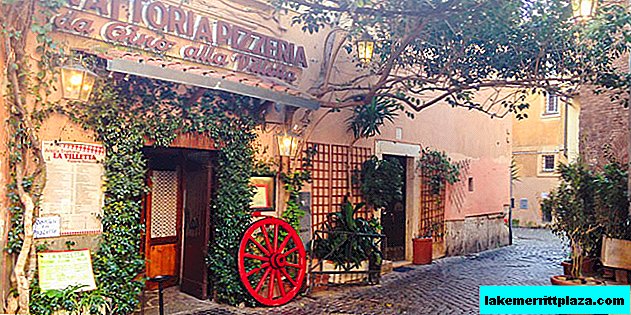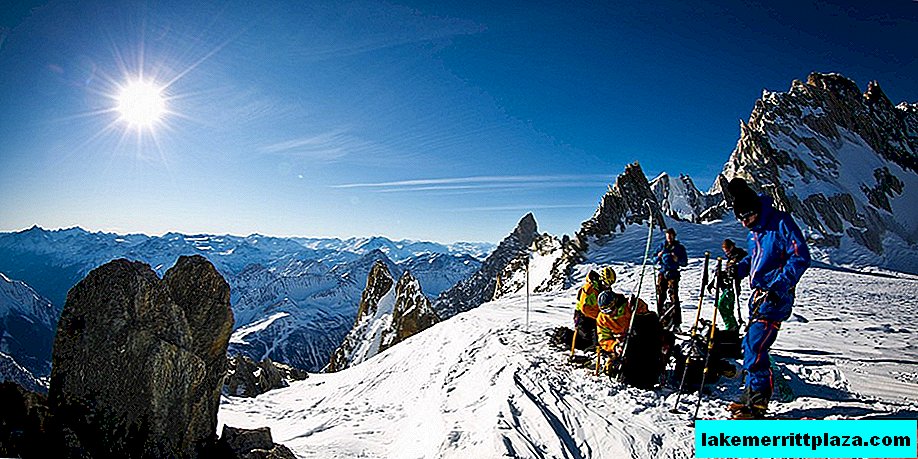The appearance of modern Rome, starting from the Middle Ages and the Renaissance, was largely formed by the villas and palaces of noble Italian families. Of course, in terms of scale, they cannot be compared with the buildings of the Antiquity, such as the Colosseum and the Roman Forum, but in terms of grace of form and richness of content, they will delight any connoisseur of architecture. Villas and palaces in Rome are also interesting from a cultural point of view, since at the moment they have housed luxurious Roman museums.
Blogoitaliano conducted its research, and out of the variety of palaces and villas in Rome, I chose the 5 most interesting.
Villa Borghese
Villa Borghese rightfully occupies the first line of our independent ranking of the best villas and palaces in Rome. It was built in the XVII century. Pope Paul V's nephew Shipione Borghese. They did not spare money for the villa. Around was broken one of the largest English parks in Rome, decorated with fountains and ancient sculptures. A special admiration for the visitors of the villa was caused by the “Borgesian wrestler”, who in 1807 was sold to Napoleon with other works of art.

Shady English park - one of the treasures of Villa Borghese
Of course, the central component of the villa is considered the luxurious Borghese mansion. Shipione Borghese wanted to seem a connoisseur of modern art, so within the walls of his brainchild, he put together an incredibly rich collection of paintings.
Here you can see paintings by Caravaggio, Raphael, Titian, the best masterpieces of Rubens and Rembrandt, Bernini's sculptures and many other outstanding works of art. Blogoitaliano wrote a separate article about the Borghese Gallery and the features of its visit.
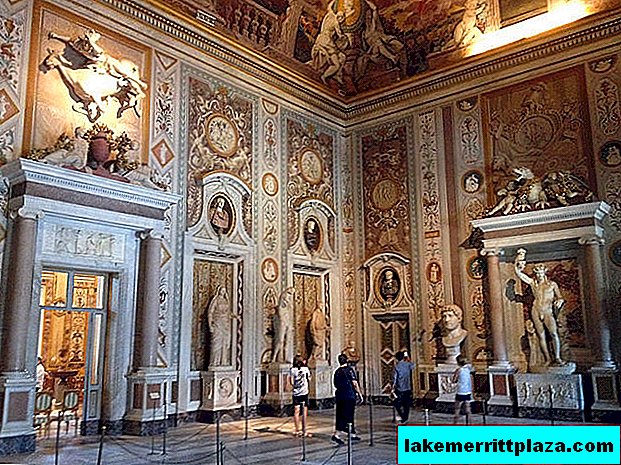
The Borghese Gallery contains outstanding works of painting and sculpture
Separately, we note that the Gallery is considered one of the most inaccessible museums in Italy, because there are limits on the admission of visitors that cannot be exceeded. For this reason, many visitors on the spot are faced with the fact that there are no tickets at the box office and it is impossible to get inside.
To prevent this from happening to you, it is better to purchase tickets in advance - via the Internet. You can do this on this site.
In addition to the gallery itself, in the territory of Villa Borghese there are:
- Villa Julia with a rich collection of Etruscan art;
- Gallery of modern art, which contains the work of Monet, Van Gogh, Gauguin and contemporary Italian artists;
- house-museum of the sculptor and composer Pietro Canonica;
- Bilotti Museum with a private collection of surrealist works;
- Globus Theater, where festivals based on plays by W. Shakespeare are held annually in August and September;
- a biopark where you can watch the life of rare and exotic animals in a natural habitat;
- zoological museum with a rich collection of world fauna.
Villa Farnesina
Another noteworthy villa in Rome is Villa Farnesina. This villa, located in the Trastevere district, on the right bank of the Tiber, was built at the beginning of the 16th century. for a banker from Siena Agostino Chigi. It became the first villa in Rome of the so-called "pavilion" type, without the usual galleries and courtyards, open towards the garden and the river. Villa changed owners several times. Since 1577, it became owned by the wealthy Farnese family, and in the XVIII century. they were replaced by the Bourbon dynasty, for a while the embassy of France was even located here.

Villa Farnesina became the first villa in Rome of the so-called "pavilion" type
The main value of Villa Farnesin is made up of wall paintings by Raphael, Sebastiano del Piombo, Giulio Romano and il Sodoma. The theme of the plots is the myths of ancient Greece.
Around the picturesque park, abundantly planted with orange trees.
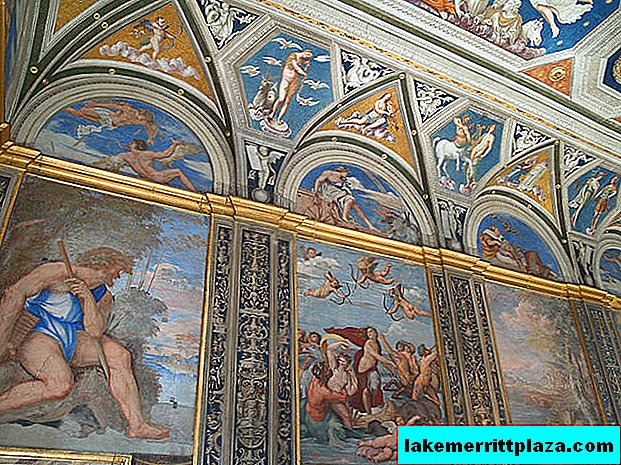
Inside, admiration is caused by mural paintings by Raphael and other prominent painters.
Palazzo barberini
Now let's say a few words about the most impressive palaces of Rome. Our independent rating will be opened by the Palazzo Barberini, located in the eastern part of the "Eternal" city. Its construction was not without the participation of another Pope - Urban VIII of the Barberini clan, who became the customer of the luxurious palazzo.
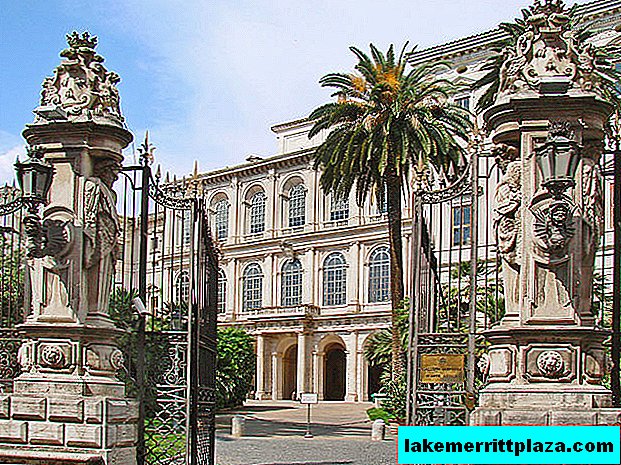
The idea of building the Palazzo Barberini belongs to Pope Urban VIII
3 great architects of the middle of the 17th century worked on the creation of a baroque building. -Modena, Bernini and Borromini. The last two are the authorship of elegant spiral staircases inside the palazzo.
For some time the Flemish workshop was located in the palace, where tapestries for the palace were made. The top floor was given over to host an extensive library of the Barberini family. Among other exhibits in the library is the manuscript of Rafael Barberini, who in 1564 visited Moscow to establish economic ties and was honored with a personal meeting with Ivan IV the Terrible. Later in his manuscript he gave a detailed description of what he managed to see in the Russian capital.
Unfortunately, the history of this palace in Rome repeated the fate of the Barberini family. Many works of art in difficult times were sold "under the hammer". Some of the treasures of the once influential Roman family went to the Vatican. And in 1949 the palace itself passed into the jurisdiction of the state.
The left wing of the building currently houses the National Gallery of Ancient Art, where you can see paintings by Caravaggio, Raphael, Tintoretto, Poussin, Titian, Rubens and other famous Italian painters, antique furniture, as well as majolica and porcelain. The right wing was occupied by the armed forces of Italy, who placed the Officers' Assembly here.
Palazzo Recession
The Spada Palace in Rome, which now houses the eponymous gallery with a private collection of paintings and the Council of State, also deserves separate words.
The Palazzo Spada was built by Bartolomeo Baronio for Cardinal Girolamo Capodiferro in the first half of the 16th century. Almost 100 years later, the palazzo acquired another cardinal - Bernardino Spada. Wanting to turn the palace into a luxurious family residence, he noticeably modified the building. The reconstruction was led by Francesco Borromini - one of the prominent architects of the time. As a result, the palazzo acquired one of the most richly decorated facades in Rome.

The lavish decoration of the facade of the Palazzo Spada acquired in the XVII century.
The splendor was added in the courtyard of the palace, which, in addition to the presence of pagan sculptures, became famous for its beautiful view of the famous Perspective Gallery of Borromini. This gallery was created on the basis of the principles of optical illusions. As a result, the total length of the gallery at 9 meters seems much longer (30-35 meters), and the 60-centimeter statue of Mercury at the end of the gallery resembles a figure taller than human height.
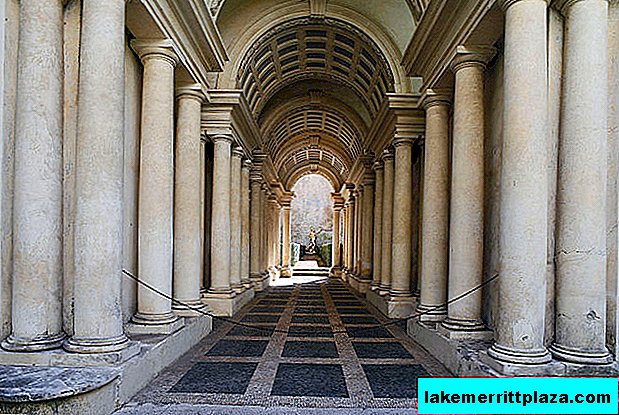
Particularly impressive in the palace is the Promising Gallery of Borromini
Inside the palace, as we mentioned above, hosts a private art collection of Bernardino Spada. However, Bernardino was not the only representative of the genus who showed interest in art. His undertaking was continued by his brother, and then by his grandchildren and great-grandchildren.
Now in the 4 halls of the palazzo you can see the works of Reni, Carracci, Gverchino, Preti, as well as especially valuable works of the northern school of painting, among which there are originals by Titian. The gallery also has a collection of antique sculptures. Of the entire collection represented, the colossal statue of Pompey found in the Middle Ages in the Campo de Fiori area is of interest. Many scholars and historians are inclined to believe that it was next to this statue that the Roman emperor Julius Caesar was brutally murdered.
In addition to the works of art in the Spada Palace in Rome, the entire interior, antique mahogany furniture and two beautiful Murano glass chandeliers have been preserved almost intact.
Palaces of Capitoline Square in Rome
Capitoline Square is one of the oldest squares in Rome. The first palaces on Capitol Hill appeared at the dawn of the Roman Empire. However, its modern appearance is largely due to the immortal genius of Michelangelo.
It was formed in the middle of the XVI century. on behalf of Pope Paul III. According to the original plan of Michelangelo, which his students eventually completed, the ensemble of the square was to be formed by three palaces - the Palace of Senators in the center, the Palace of Conservatives and the New Palace on the sides.
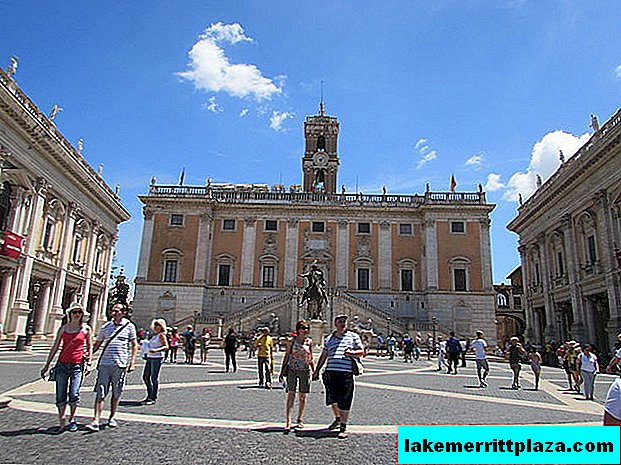
The appearance of modern Capitoline Square is formed by three palaces, according to the plan of Michelangelo, united into a single whole
In the architecture of the palaces of Capitoline Square in Rome, Michelangelo first applied an architectural technique called a colossal warrant when columns or pilasters span several floors of a building at once.
The Palace of Conservatives was erected in tone with the Palace of Senators, where judges (conservatives) and his twin brother, Palazzo Nuovo (New Palace), were sitting, whose construction was completed only in the middle of the XVII century. for which he received his name.
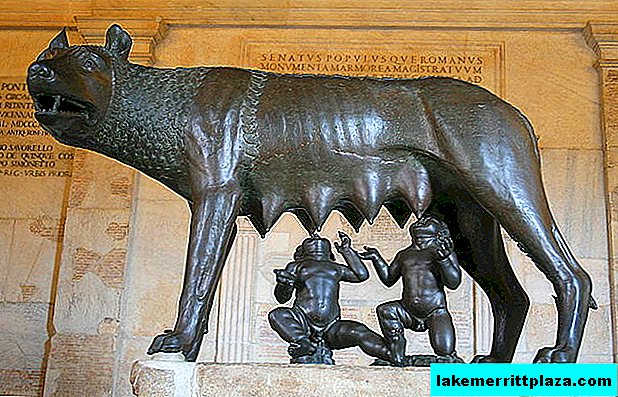
In the Palace of Conservatives you can see the famous Capitoline Wolf
Currently, the City Hall of Rome is sitting in the Senatorial Palace, and the exposition of the Capitoline Museums is located in two other palaces. So in the Palazzo Nuovo you can see the pearls of ancient sculpture, busts of Roman philosophers and emperors, the famous Capitoline Wolf (sculpture dates back to the 5th century BC), a gilded statue of Marcus Aurelius, marble sculptures from the Villa Adrian in Tivoli are stored in the Conservatives Palace Greek vases, as well as a rich collection of paintings.
Other interesting articles:
- What to see in Rome on your own in 1 day
- Excursions in Rome in Russian: 5 most popular
- Borghese Gallery: Rome's most coveted and inaccessible museum
- Roman Forum: the ancient heart of the Eternal City
- Sistine Chapel and Vatican Museums: Things to Know


